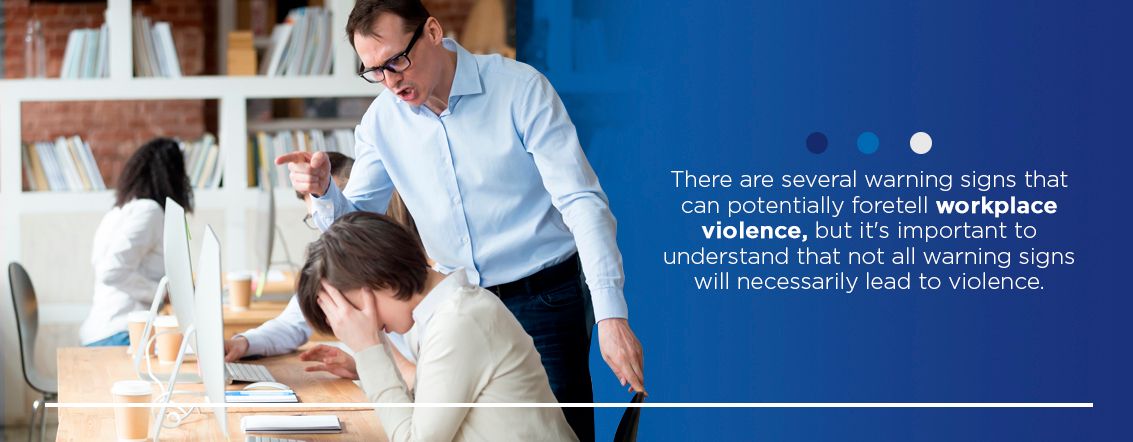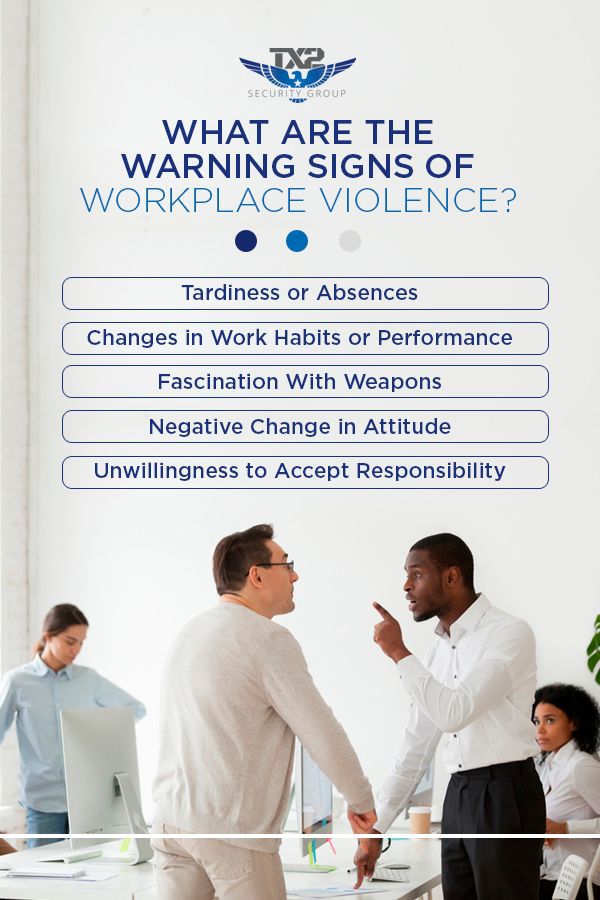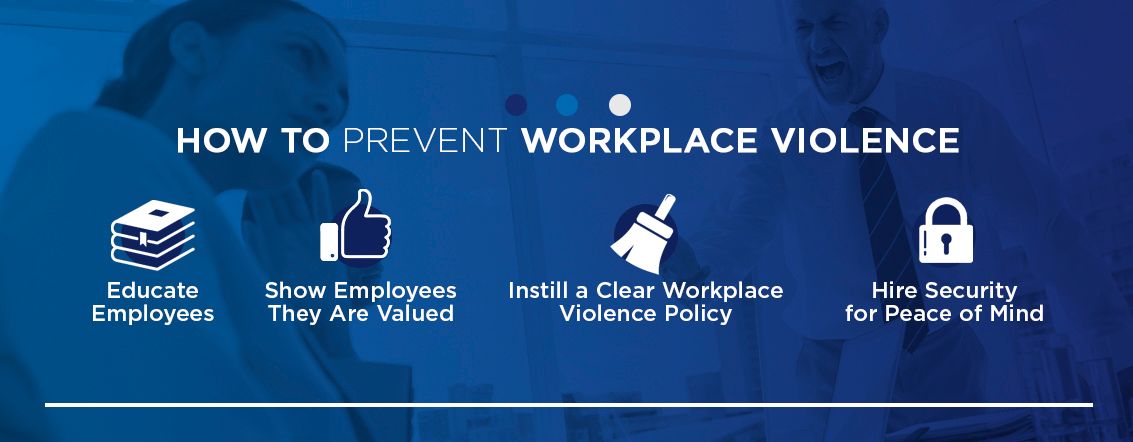It’s always better to be safe than sorry, especially when it comes to the well-being and safety of the workplace. Identifying early warning signs of workplace violence can help resolve minor conflicts before they escalate.
A drastic — often negative — change in character can be a clue to an employee’s struggle, and addressing it sooner rather than later is the best way to prevent an escalation of workplace violence.
However, it’s important to remember that many of these changes can have simpler explanations and may never escalate into physical or verbal violence. Because workplace violence awareness and prevention isn’t a sure science, it’s always safer to err on the side of caution and check in on employees — especially when they act out of character.
Workplace violence indicators can vary from an individual’s actions to their overall attitude. Five of the most common warning signs of workplace violence are:
1. Tardiness or Absences
An early warning sign of violence in the workplace can be a break in routine. Employees who are generally always on time and rarely leave early or miss work may change that if an external factor is negatively impacting their life. This behavior will negatively affect the employee’s reputation and career, as well as impact the entire workplace.
Similarly, social isolation is another factor to consider. If an employee is constantly calling in sick or showing up to work late — or even finding reasons to leave early, with or without authorization — they most likely will also be isolating themselves from the social culture of the workplace. Someone who pulls away from harmless chitchat or from group lunches or office parties likely is dealing with something stressful. Or, if an employee seems to be pulling away from any close friends and family, it may be a cause for concern, as sudden isolation could be a symptom of a deeper issue.
Approaching the employee and asking about their well-being — in a non-judgemental or accusatory way — is a good way to reach out and offer empathy.
2. Changes in Work Habits or Performance
If an employee is showing up on time, but the work they are doing is less than par, it could be one of the early warning signs of violence in the workplace. A decline in the quality of work — including being unable to concentrate and making bad decisions — are likely indicators that something is amiss. It’s one of the early warning signs, so it’s best to resolve the issue before it escalates.
A change in productivity levels or energy levels may accompany performance at work, and stress is often the culprit for this. Far from harmless, stress can snowball into an overwhelming burden that can lead to signs of aggressive behavior and violence. It’s always best to encourage employees to indulge in stress-busting activities, so they are better able to tolerate what anything that comes their way.
3. Fascination With Weapons
While a passing curiosity about weapons may not warrant a second glance, an obsessive interest definitely does. One of the most obvious workplace violence indicators is a deep fascination with weapons. An employee researching and talking excitedly about weapons while at work is understandably a cause for alarm and should be reported straight away.
Similarly, someone who seems to be overly curious about incidents of workplace violence — either at the present workplace or globally — may be concerning. If an employee is asking about previous incidences of workplace violence, researching violent events in the workplace or even has their own history of workplace violence, it shouldn’t be ignored. Any sort of obsession can lead to a bad outcome, but an obsession with violence and tools of violence is more likely to escalate into something unsafe.
4. Negative Change in Attitude
Changes in attitude aren’t always clear and obvious, and it can be difficult to pinpoint whether it’s a temporary mood swing or something that runs much deeper. Any drastic change in attitude is concerning, but a negative change should be paid particular attention to.
Feeling hopeless, crying at work and being passive-aggressive are all potential warning signs of a violent employee. If drugs or alcohol are partially or fully responsible for the change in moods, it can be a clear warning sign of workplace violence.
Even changes in communication can signal a problem. Using inappropriate language or cursing at work, uttering threats or spreading rumors about coworkers are inappropriate and threatening behaviors in the workplace.
Sometimes threats are an employee’s way of pumping themselves up for eventual action, so they shouldn’t be brushed off. Threats — either written or verbal — have the potential to escalate, and laughing them off as inauthentic may end up doing more harm than good.
5. Unwillingness to Accept Responsibility
Ideally, an employee will apologize and work to fix their behavior when they are told it fails to follow professional guidelines. But one of the warning signs of workplace violence is an employee’s inability or unwillingness to take responsibility for their actions.
This can take the form of constantly shifting the blame to anyone else, holding grudges — especially against professional superiors — having unreasonable demands and being unable to maturely handle criticism. Verbal or written threats may follow, particularly directed at anyone against whom there is a grudge.
Physical Warning Signs of Employee Violence
Specific actions often signal a problem with an employee and should be noted as potential warning signs of workplace violence — they include:
- Fatigue
- Clenched jaws or fists
- Trembling or shaking
- Paleness
- Unnatural sweating
- Scowling or sneering
- Avoiding eye contact
- Using curse words or crude language
- Talking too loudly
- Chanting
- Shallow breathing
- Invading personal coworkers’ personal space
- Restlessness or repetitive movements
- Pacing
As many of the potential warning signs of workplace violence, these physical signs can often be the sign of something less sinister. Again, context is everything.





